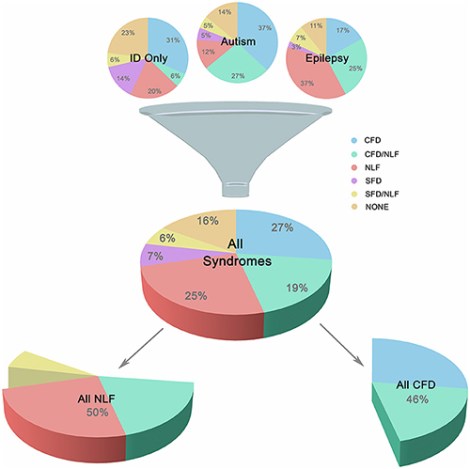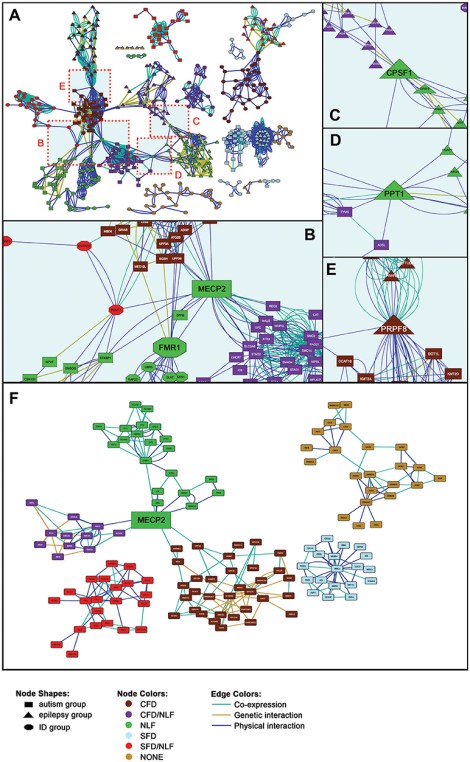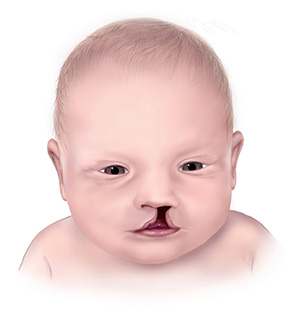Last week our team published its newest work in the realm of autism genetics in Frontiers in Psychiatry titled, “Widespread Genotype-Phenotype Correlations in Intellectual Disability.” For those of you who don’t follow genetics closely, that title probably means little to you. So I’m going to try to explain what we found and why we think it’s so interesting.
This work was performed in conjunction with one of my primary collaborators, Dr. Alex Feltus at Clemson University and one of his students, Zach Gerstner. We took a large group of genes associated with intellectual disability (mental retardation) and divided them into subgroups based on whether the conditions had the following clinical features:
- high co-occurring rates of autism
- high co-occurring rates of epilepsy
- association with different types of facial malformations
- association with neurodegeneration or other neurodegenerative features like brain atrophy and certain movements disorders

CFD = complex (multiple) facial malformations; SFD = simple (single) facial malformations; NLF = neurodegenerative and neurodegenerative-like features; None = no features of interest.
This breakdown led to 18 different subgroups of genes to which we added other interacting and co-expressed genes to expand the overall network. When we looked at this larger network of genes, we found that our different subgroups fell very predictably into clusters that for the most part only connected to other genes within that same cluster. You can see the main results in the image below in frame A. The side panels show closeups of some of the interconnecting nodes between clusters and panel F is the SFARI-based autism-associated gene clusters alone. (Sorry for the large image but there’s a lot of detail.)

Complicated pictures aside, what does it all mean??
So here’s the gist. These results suggest there is a strong relationship between the presence of features like autism in intellectual disability and the gene networks that are affected due to gene mutations. If looked at in reverse: mutations that target key gene networks significantly increase the likelihood an individual with intellectual disability will also develop autism. This also indicates that even though different individuals with intellectual disability + autism may have different genetic syndromes (e.g., Fragile X Syndrome vs. CHARGE Syndrome), on the whole they do share some biologic commonalities at the gene network level that may be the reason for their common traits of autism.
We also discovered that conditions with a high association with autism were much more likely to have facial malformations, for reasons not well understood. Undoubtedly, some of these same gene networks are involved in facial development as well as that of the brain. This association may give us some clues as to what these genes are doing in the brain and whether they’re key in specific stages of development.

Illustration of a baby with CHARGE Syndrome and facial malformation.
There are many other findings, both clinical and genetic, in this paper and for anyone interested in further reading please access the original article, which is available open access. Feel free to email me with questions. However, since most of my readers here have a personal and/or professional interest in autism, I’ve kept this summary more focused.
Although this work centered on intellectual disability (for geneticists this is called “taking the easy way out” 😉 ), we suspect that many of these same autism-related gene networks are involved in the entirety of the autism spectrum, although we’ll need to test that hypothesis with further research. However, despite the obvious heterogeneity of the autism spectrum, we do nevertheless feel that it is a spectrum and shares some common biology. This paper suggests at least within rare forms of intellectual disability, that’s the case.

Yet almost all of the very high IQ people I’ve met in the past 70 years have been Aspergers. Is that listed under the Intellectual Disability rating?
Pops
Armed and Safe – not just a theory.
Yeah, there seems to be some commonalities between high IQ people and autism. I don’t think that’s a coincidence, although obviously not all high IQ people are autistic of course. But all of the syndromes we studied in this project definitely had mental retardation as a primary feature. Often the gene mutations involved tend to knock out gene function entirely or, sometimes, lead to overexpression of the gene. But either way, they’re the more severe cases. More minor mutations in the same genes may also increase autism risk but may do so more variably (i.e., are less “penetrant”) and lead to less severe forms, e.g., autism with less cognitive impairment.
Reblogged this on Cortical Chauvinism and commented:
Our latest publication detailing networks of genes implicated in autism and intellectual disability.
Autism Traits Predictive of Specific Gene Networks in Intelectual Disability, remind me some findings on another study not on genetics but on Environmental and State Level Regulatory Factor Affect the Incidence of Autism and Intellectual Disability, March 14, 2014, Andrey Rzhetsky; University of Chicago.
This study founded that ASD incidence rate were strongly linked to population normalized rate of congenial malformations using congenital malformation of the reproductive system in male.The main finding of this study was a 283% increase in the incidence of ASD for every percent increase in incidence in malformations.In the Other Malformations in male category, malformations appeared to significant affect both phenotypes: 31% ASD rate increase and 43% ID rate increase.ASD can’t be diagnosed during pregnancy maybe something during the malformation diagnosis and follow-up is altering the fetus environmental surrounding and ASD and ID incidence increase is a consequence of that monitoring procedure.For my comment I am using CFD(complex(multiple) facial malformation and SFD(simple) facial malformation as the Other malformation category in Rzhetsky study.
That’s very interesting. Although I am concerned in that article they used reproductive congenital malformations as a surrogate for environmental exigencies. (I don’t disagree that environment likely plays a significant role in autism incidence, but otherwise that’s quite a presumptive leap that reproductive anomalies are not typically genetically-driven.) In our study, although I reported in the article that facial malformations were more common in the autism group, those facial malformations shared strong links with the presence of Multiple Congenital Anomalies (MCA), which sometimes included reproductive anomalies. So I would have expected all sorts of physical malformations to occur more often in autism + ID versus ID without, if that makes sense. We selected the complex facial malformations as a proxy for the other anomalies because they were one of the most common and most striking features.
I have a question? Identical twins born prematurely one twin has ID/Autism the other is developing normally both had global development delay can you clarify this?
Hi, Helen. A lot of these neurodevelopmental conditions have complex backgrounds, so even though there may be a genetic tendency to develop ID/autism, environment can definitely play a significant role. For instance, even though identical twins generally share a roughly identical genome (there can be minor exceptions), their in utero environment can still vary somewhat. This is especially the case for twins who share a placenta, as this can sometimes lead to Twin-Twin Transfusion Syndrome (TTTS), in which one twin is receiving more blood flow than the other one. This kind of imbalance could definitely tip the scales in a twin that was already somewhat predisposed. The fact that you say both twins had global developmental delay, but I’m assuming one has caught up and hasn’t developed autism while the GDD in the other has turned into ID/autism? Can you tell me, the twin that has the ID/autism, was s/he smaller at birth than the other twin? Sometimes also twins can have increased risk for cord entanglement, which, if wrapped around the neck &c. could lead to oxygen loss and some brain damage, which can also increase the risk of autism.